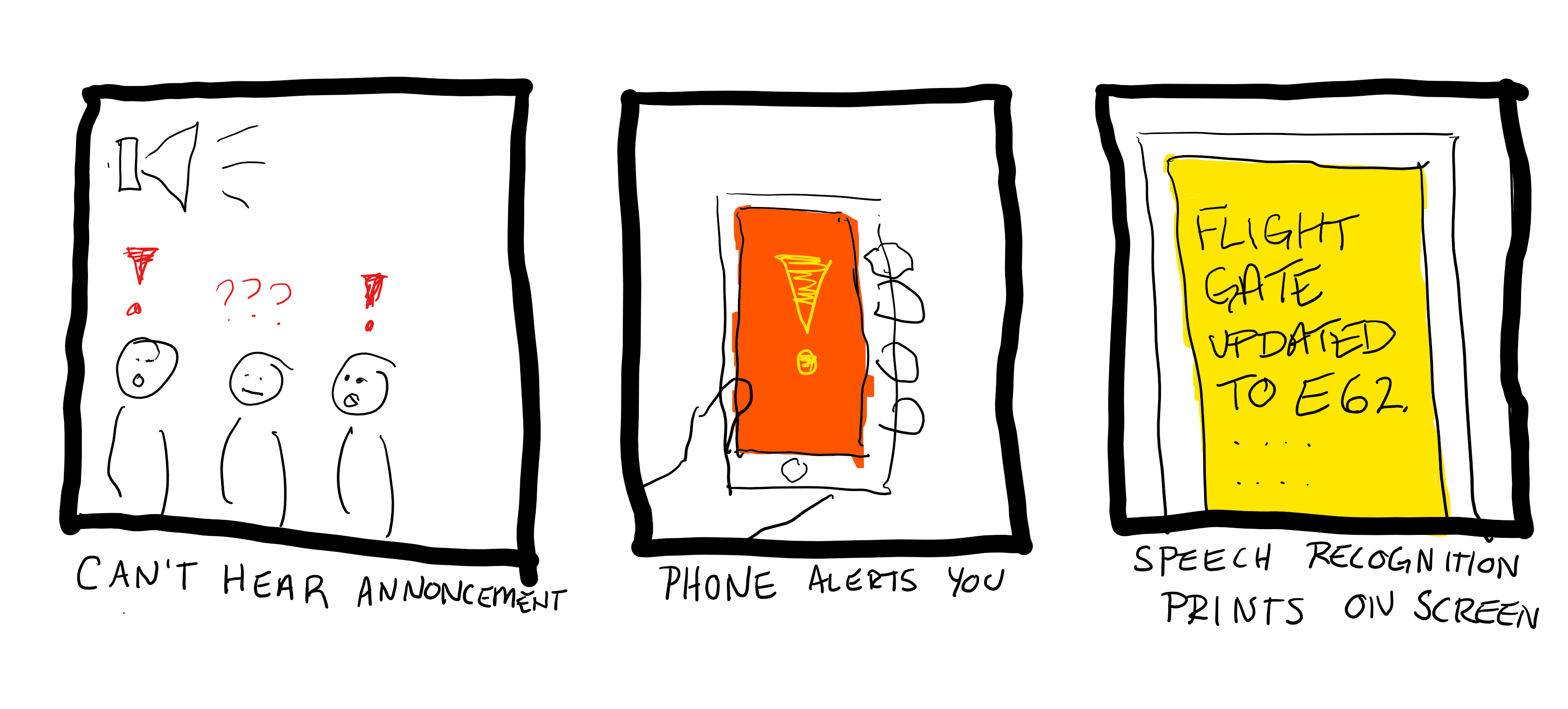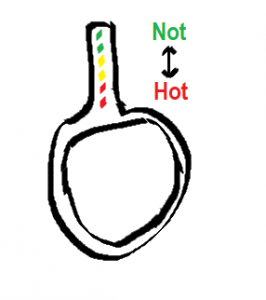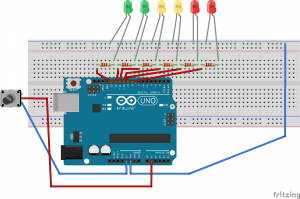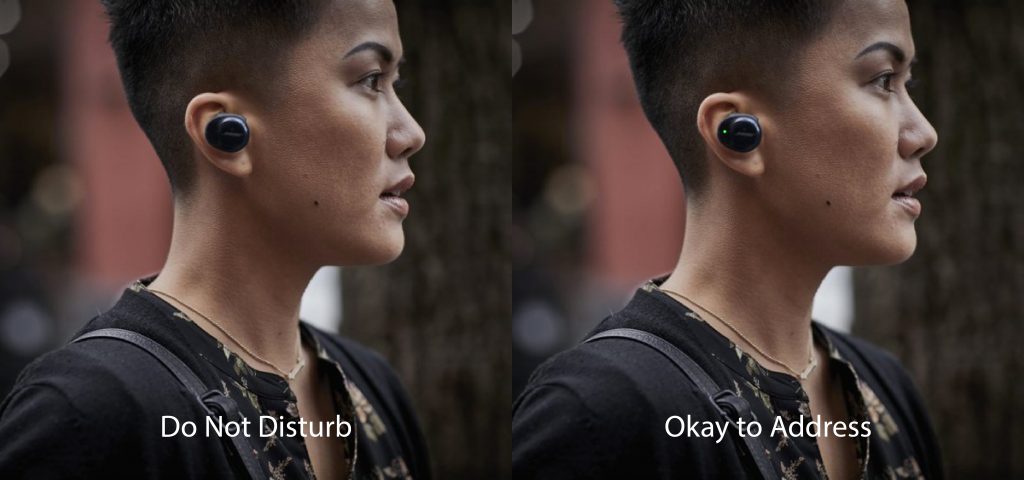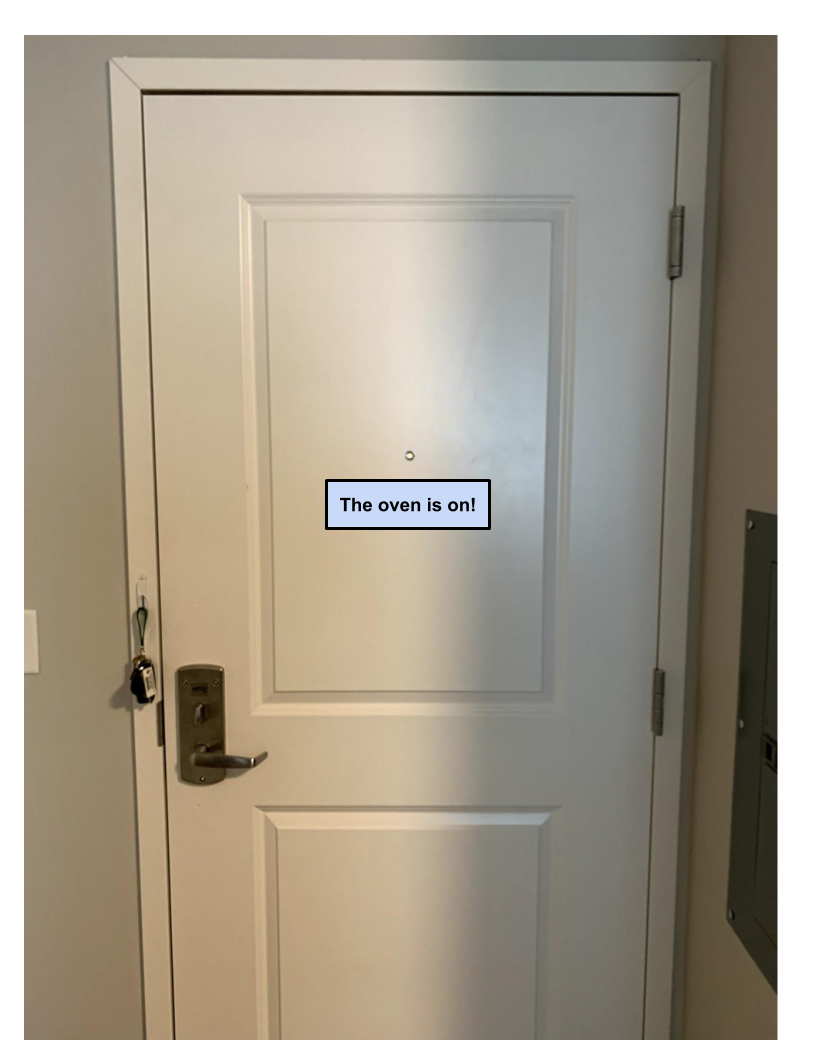Problem:
Not being able to hear when another vehicle is honking at you, or something else or from which direction that honk is coming from.
A General Solution:
A device that would visually notify the driver that someone is honking and from which direction that honk is coming from.
Proof of Concept:
An Arduino with sound detectors and LEDs/a visual interface. When a sound above a certain volume is heard by the sound detectors, the corresponding LED lights up. If the same volume (with some tolerance) is picked up by both sound detectors, both LEDs light up. On a more realistic level, there would be detection for every direction away from the “vehicle” which would require more sensors.
Fritzing Sketch:
The Fritzing sketch shows how the sound detectors would input information to the Arduino as well as how the LEDs (in this case) would be connected to the output pins. I could not find the piece for the sound detectors in the Fritzing library so I replaced the sound detectors with potentiometers because the sound detectors can input analog data which would be more helpful than digital data in this scenario. Not pictured, is that the Arduino would have to be connected to some battery source.
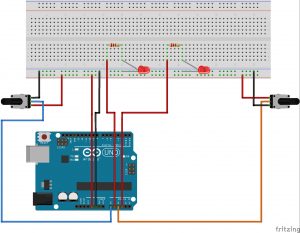
Proof of Concept Sketches:

The flow of data starts with a car honking at the user’s vehicle, reaching the sound detector which then feeds an analog input into the Arduino which will decide which direction the sound is coming from. It will then turn on the corresponding LED or visualization to notify the driver that someone is honking at or near them.
Proof of Concept Videos:
Prototype:
Tolerance Study:
Files:
